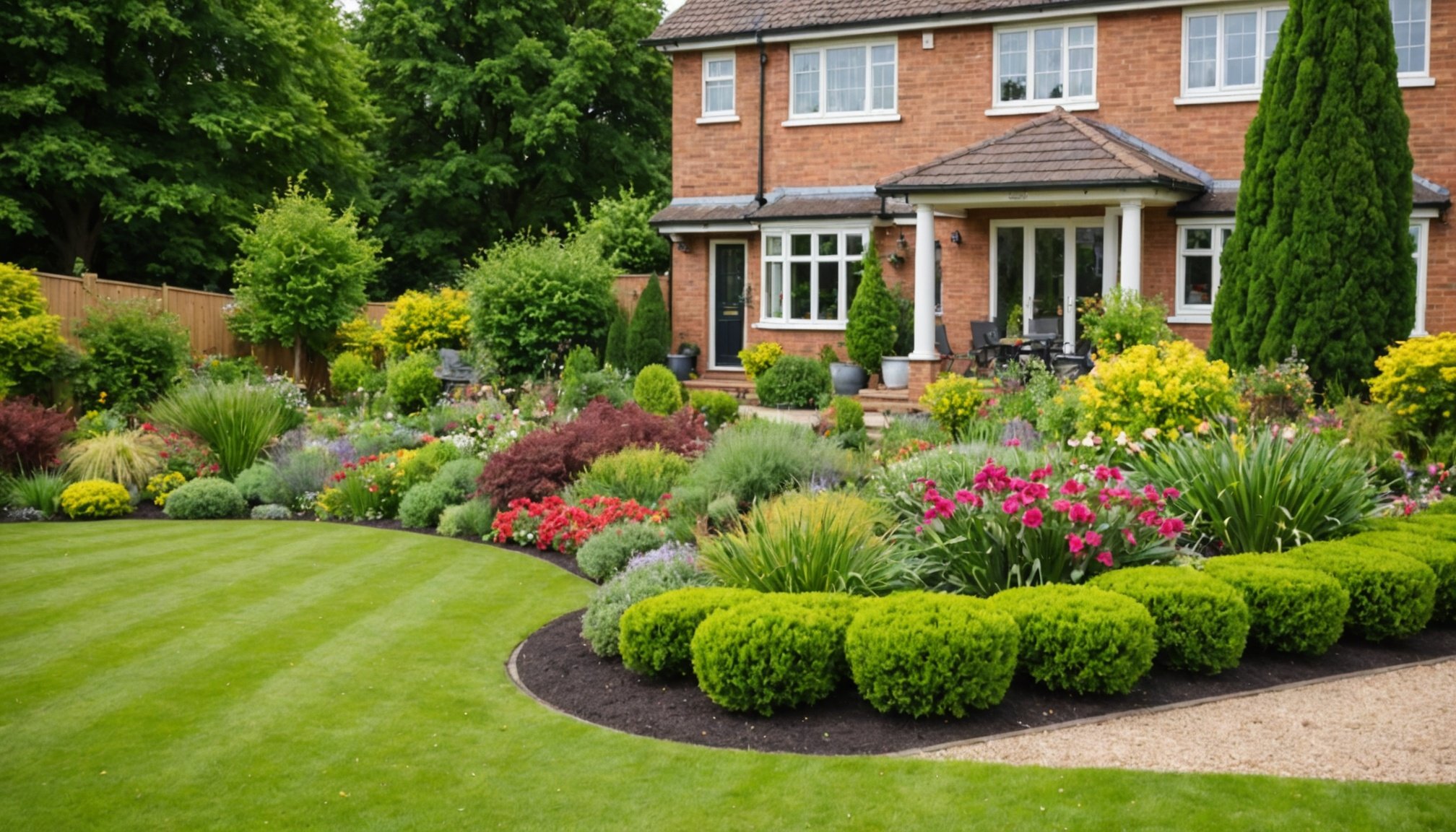The Financial Impact of Garden Landscaping on Property Value
Understanding the financial impact of garden landscaping is crucial for homeowners looking to maximise their property’s value. In today’s real estate market, well-designed garden landscaping is often seen as an invaluable asset.
Garden landscaping significantly boosts property value by enhancing curb appeal and creating welcoming outdoor spaces. This appeal resonates with potential buyers, increasing the likelihood of a sale at a higher price. Based on case studies, properties with meticulous garden landscaping often experience a noticeable rise in selling prices. For instance, homes with upgraded outdoor features like patios, water fountains, or well-maintained lawns have sold up to 15% higher than those without such enhancements.
Also to discover : Exploring Mortgage Solutions for First-Time Homebuyers in the UK”s Remote Regions
In the UK housing market, the return on investment for garden landscaping is substantial. Statistical data indicates that homeowners enjoy a return of approximately 5% to 15% on garden landscaping. This figure adds tangible value to a property, aligning with the increasing demand for appealing outdoor spaces.
Incorporating garden landscaping into property enhancement strategies provides significant financial benefits. By boosting property value and appealing to potential buyers, homeowners can leverage their garden to achieve a more profitable sale, reflecting positively on their investment in the real estate market.
Also read : Unlocking Profit: The Financial Advantages of Solar Panel Installation for UK Rental Properties
Understanding Insurance Costs Related to Landscaping
When thinking about home insurance, it’s essential to understand that landscaping impact can play a significant role in insurance costs. Landscaping features like hedges, swimming pools, and large trees can alter insurance premiums. For example, a well-manicured garden might enhance curb appeal but might also raise fire risk, thereby increasing costs. Conversely, drought-resistant plants and fire-resistant landscaping can reduce risk and lower premiums.
Factors Impacting Insurance Premiums
- Swimming Pools: Adding such features makes homes more liable to risks, impacting insurance substantially.
- Trees and Shrubs: Large trees close to a home could increase the risk of storm damage. Insurance may be higher to cover potential claims.
- Safety Features: Installing gates and fences can lower costs by reducing theft risk.
Experts suggest choosing landscaping practices that minimize hazards while maintaining aesthetic appeal to manage costs effectively. Opting for sustainable designs or plants that require less maintenance and pose lower fire risks can prove beneficial. This way, homeowners can enjoy beautiful landscapes without overwhelming financial burdens from insurance adjustments. Selecting the right landscaping features is not just about aesthetics; it’s an informed decision that impacts overall home insurance expenses.
Strategic Landscaping Tips for Homeowners
Making smart landscaping decisions can substantially enhance your home’s resale value. Integrating well-thought-out features not only boosts curb appeal but also showcases the property’s potential for future homeowners.
Essential Features for Boosting Property Appeal
To increase your property’s allure, integrate diverse plantings that provide blooms throughout the seasons. The inclusion of strategically positioned trees and bushes aids in creating natural boundaries and privacy. Consider pathways or accent lighting to highlight architectural features and direct the flow of your outdoor space. These details can profoundly elevate perceived value.
Cost-effective Landscaping Improvements
Budget-friendly projects can still pack a punch. Introducing native plants reduces maintenance and water costs. Mulching is an effective solution for maintaining soil moisture and deterring weeds. Simple additions like colourful flower beds or an attractive array of pot plants can add cheerful character without hefty expenses. Such enhancements often yield a high return on investment.
Seasonal Considerations for Long-term Value
Adapt your landscaping for year-round allure. Consider planting evergreens for structured appeal during winter months. In the spring, vibrant annuals deliver refreshing colour pops. Adjustments like installing shade-friendly plants during hot summers or applying protective layers of mulch in autumn ensure your landscaping remains attractive and functional irrespective of the season.
Local Market Trends in UK Landscaping
In the United Kingdom, landscaping preferences reveal intriguing insights into property desirability. Different regions showcase distinctive styles that resonate with local tastes and climates. For instance, in southern areas, traditional English gardens with vibrant flower beds and symmetrical designs are popular. In contrast, northern regions may favour more rugged, natural landscapes that align with the local environment. These regional UK market trends significantly influence property values, as homes with appealing gardens often attract higher interest from buyers.
Sustainable landscaping is gaining momentum among UK homeowners thanks to environmental concerns. Practices such as rain gardens, native plantings, and permeable paving are becoming essential features in modern landscapes. These efficient methods not only enhance the property investment potential by showcasing environmental responsibility but also offer cost savings on water and maintenance.
Local zoning laws and guidelines also play a pivotal role in shaping landscaping decisions. Certain areas may impose restrictions on the types of plants and structures allowed, impacting homeowners’ choices. Understanding these regulations is crucial for property developers and homeowners looking to make informed decisions, ensuring their landscaping projects are both legally compliant and aesthetically appealing. Ultimately, aligning with local trends and sustainability practices can bolster property appeal and investment returns.











